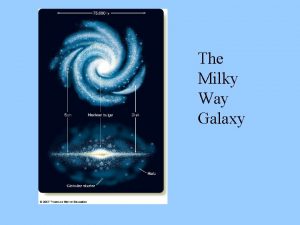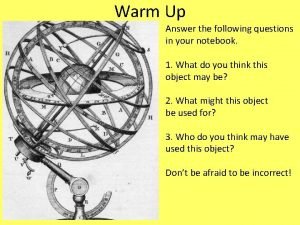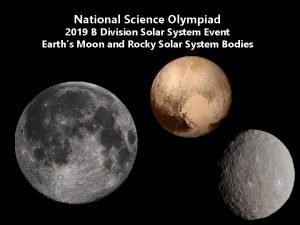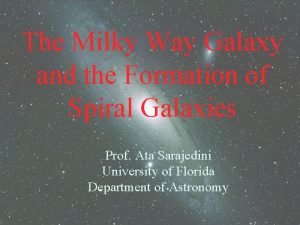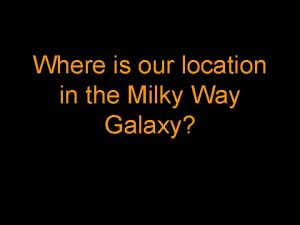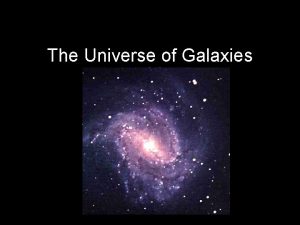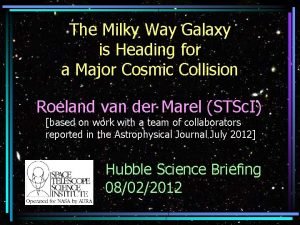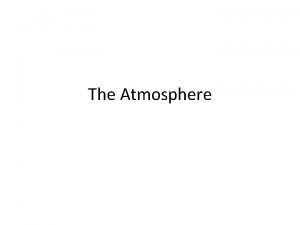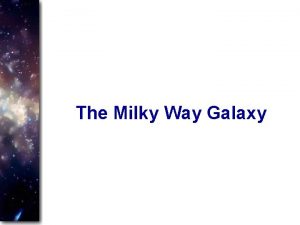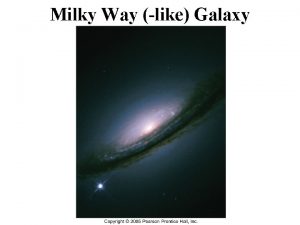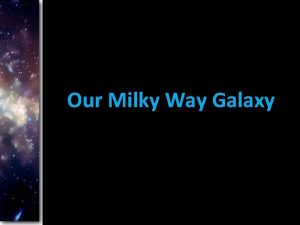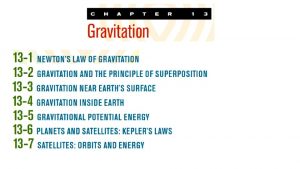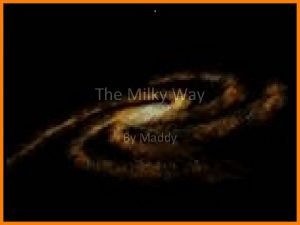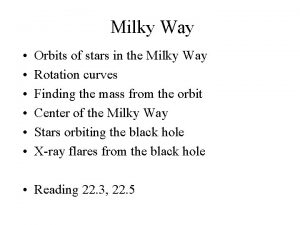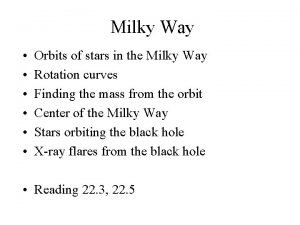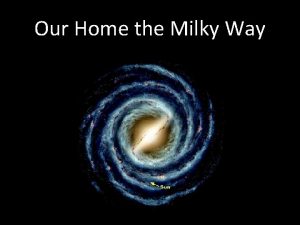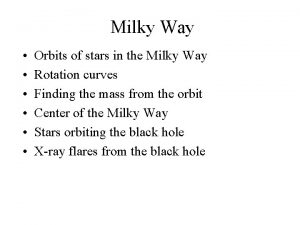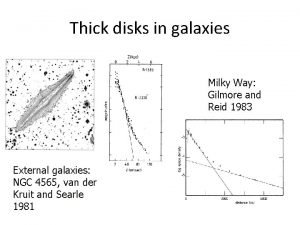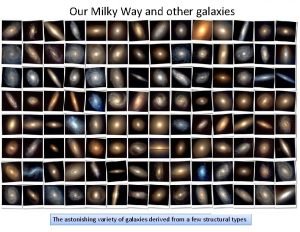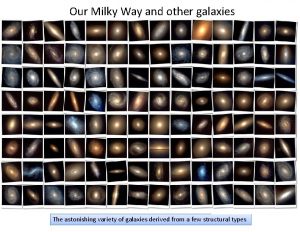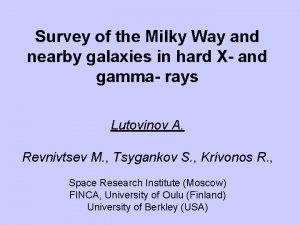Milky Way and Galaxies v It is very
















- Slides: 16

Milky Way and Galaxies

v It is very difficult to observationally determine what our galaxy looks like. v However, over the years, many resourceful astronomers have pieced together a structure. v Pictured here is that structure.

Differential Rotation v Galaxies are not rigid objects. v The galaxy rotates at different rates outward from the center. v This is called differential rotation.

Origin of Milky Way v The galaxy possibly began as a rotating gas cloud. v Globular clusters forming from the primordial cloud, move outward forming the halo. v As the cloud flattens, increased stellar formation defines the equatorial region and young, ever forming stars.

Milky Way Map Use of radio maps made at 21 cm wavelength reveals spiral arm structures.

v As long as a triggering mechanism exists, stars will continue to form. v Orbiting gas clouds interact with the dust in the spiral arm. v Compression of the cloud's leading edge will trigger star formation.

Island Universes v There are billions of galaxies each containing billions of stars. v Immanuel Kant proposed the universe was filled with great wheels of stars. v The Earl of Rosse noticed some spiral shaped nebula and called them island universes. v Controversy surrounded this idea as William Hershel proposed we lived in an empty universe.

Hubble Constant v. Hubble's Law relates the distance and velocity a galaxy is receding from us. v. A number called the Hubble constant (H) relates these two quantities. v. It is very difficult to accurately measure H. v. The value ranges from 50 to 100 km/S/Mpc.

Galaxy Interactions v Here is a computer model showing two galaxies moving passed each other. v The spiral shapes are drawn out in this process due to gravitational interaction

v Galaxies are found in groups. v Shown is the Milky Way's local group.

Galaxy Types v. According to observations, galaxies come in several types: (a) spiral, (b) elliptical and (c) irregular. v. The distance to galaxies is so large that a new unit of measurement, the megaparsec (Mpc)is used. v. Using the Hubble Space Telescope to detect Cepheid variables in some galaxies, it is possible to measure the distance to them. Figure 16. 3



Spiral Galaxy

Barred Spiral Galaxy

Ellipical Galaxy Messier 32: a dwarf elliptical (E 2) satellite galaxy of the Andromeda Galaxy. Messier 110: dwarf elliptical (E 6) satellite galaxy of the Andromeda Galaxy.
 Milky way description
Milky way description Where is the solar system located in the milky way
Where is the solar system located in the milky way Democritus milky way
Democritus milky way Science olympiad solar system
Science olympiad solar system Canis major overdensity
Canis major overdensity Dung beetle milky way
Dung beetle milky way Our location in the milky way
Our location in the milky way The milky way
The milky way Milky way galaxy sketch
Milky way galaxy sketch Milkyway fonterra
Milkyway fonterra Milky way galaxy shape
Milky way galaxy shape Edwin hubble
Edwin hubble Chapter 30 galaxies and the universe
Chapter 30 galaxies and the universe Irregular galaxy
Irregular galaxy 3 chemical properties of oxygen
3 chemical properties of oxygen Pr��ce v cestovn�� kancel����i praha
Pr��ce v cestovn�� kancel����i praha Nemertea diagram
Nemertea diagram
